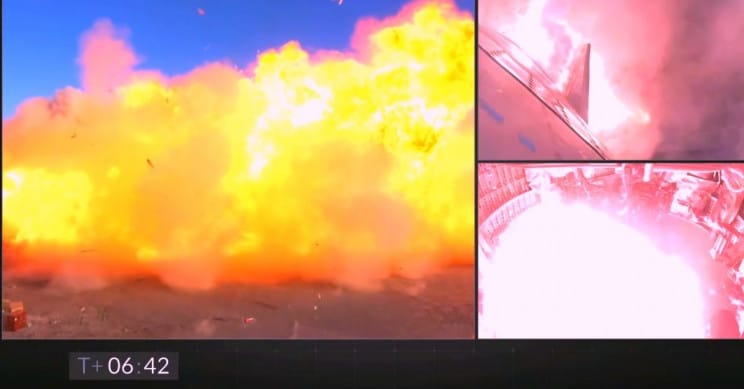Elon Musk’s SpaceX is venturing into space at a handsome speed. Its new Starship SN8 prototype got a second swing and successfully launched to the upper atmosphere. The SN8 prototype flight took place from Boca Chica on Wednesday, which is a SpaceX base situated in Texas.
However, the successful launch was followed by a failed landing; nonetheless, Musk still mark’s its launch as a huge success for their ventures to outer space and especially to Mars.
The SN8 prototype Starship performed an aerial flip moments before its explosion on the ground. Authorities have stated that the landing was happening just fine, but a technical default caused the touch-down velocity to increase, which resulted in the mega explosion.
The launch and crash incident marked a major step forward for the company’s forthcoming Space Vehicle, which would be eventually designed to take people to Mars for the first time. The whole launch event of the prototype starship was live on Youtube on SpaceX’s official channel.
The reason behind the failed landing was the low pressure in the fuel header tank during the landing burn. Hence, increasing the touchdown velocity, which led to the crash. Musk said that they had gathered all the necessary calculations and information needed for their future space ventures with the successful launch.

SN8 Starship prototype was launched on Wednesday from their South Texas Launch Site. The vehicle reached the upper atmosphere successfully, performed an aerial flip, and stayed in a vertical position on the descent. But it hadn’t slowed down to evade impacting the landing pad with an explosion.
It was the SpaceX Starship’s maiden flight to such a high altitude. Experts say it went up in the space around an altitude of 41,000 feet.
Previous test flights have only taken the prototype vehicles about 492 ft (150 m) high — but didn’t had the nose cone, flaps, or other signature features needed to manage the vehicle’s flight in the thin air of the space.


